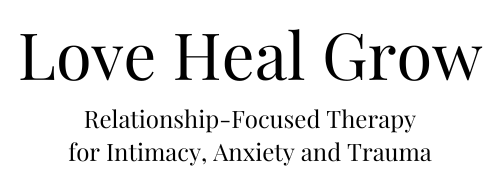
Most of us are familiar with the experience of becoming so engrossed with a film or book that we lose track of time, going on “autopilot” during a long drive, or losing ourselves in a daydream. All of these are examples of benign dissociation which are a fairly common part of the human experience. Dissociation exists on a spectrum, with these more common, mild forms of dissociation on one end, and more pronounced, disruptive forms of trauma-related dissociation on the other.
What is dissociation?
The word dissociate comes from the Latin root for “to sever”, and in the broadest sense, to dissociate is to sever or separate from some part of our experience – from our thoughts, feelings, memories, behaviors, physical sensations, or sense of identity . From a neurobiological perspective, dissociation is a basic hardwired mechanism that occurs in humans (and other mammals) when overwhelmed, fatigued, threatened, or in pain.
When is dissociation a problem?
So when should we be concerned about dissociative experiences? Well, to put it simply, it is not a problem unless it’s a problem. For the most part, occasional mild dissociation is relatively harmless. Dissociation can become a concern when its frequency or severity becomes disruptive to our daily life. This type of disruptive dissociation can be seen as a symptom of many different mental health issues: dissociative disorders, personality disorders, anxiety disorders, post traumatic stress disorder, and complex post traumatic stress disorder, to name a few.
What can dissociation look like?
Dissociative experiences can vary wildly from person to person. They can last minutes, days or months. They can be triggered by stressors or show up without any apparent trigger. They can be frightening, mildly unpleasant or neutral experiences. In general, there is no single way that dissociation is experienced. However, there are some dissociative experiences that are shared among individuals who experience trauma related dissociation:
- Depersonalization: Feeling disconnected from yourself or your physical body. Feeling numb, frozen, or as though you are “outside” of your body.
- Derealization: A sense that the external world is altered or “not real” in some way. Things may feel fuzzy, foggy, or far away. Some people may describe their experience as being like in a dream, movie, or video game.
- Memory issues: Memory issues that are caused by trauma-related dissociation can vary but may look like being unable to remember part or all of a traumatic incident, gaps in past memory lasting minutes to years, or difficulty remembering things in day-to-day life.
- Identity confusion: Feeling confused about who you “really are”, frequent unexplained fluctuations in beliefs, interests, and opinions.
- Identity alteration: This type of dissociation can be best understood as having a part or multiple parts of yourself that feel separate from your “core” self. You may feel like you have thoughts, emotions, memories or even behaviors that belong to someone else. Identity related dissociation can be extremely distressing and has often been misunderstood and stigmatized, but like other forms of dissociation it is simply a survival mechanism that developed to keep trauma survivors safe.
The connection between childhood trauma and dissociation
When we are in scary, threatening, or overwhelming situations that we feel helpless to escape, our brain responds by numbing the distress or pain we are feeling – it is our body’s natural anesthesia. When physical escape is not possible, dissociation offers us a mental escape so that we are able to survive highly stressful or traumatic moments. This survival mechanism can linger long after the traumatic incident has passed and can also manifest as a way to escape the anxiety, rumination, and painful emotions that often follow a traumatic experience.
Dissociative experiences are particularly associated with experiences of childhood abuse and neglect. This makes sense when we consider that children are dependent on their caregivers to get their emotional and physical needs met and are less likely to be able to escape traumatic situations or unhealthy environments. Additionally, our limbic system – the part of the brain that regulates our trauma responses – is developing in our early childhood. Frequently relying on dissociation to deal with discomfort, neglect, or abuse while this part of our brain is developing makes our brain more likely to default to that response when dealing with stress or trauma later in life.
Treating Trauma-Related Dissociation
Trauma-related dissociation can be a frustrating and even frightening experience for trauma survivors. While dissociation can be helpful or adaptive in certain circumstances, frequent, severe dissociative experiences can interrupt our ability to lead our daily lives, maintain healthy relationships, and in some situations, may even increase our vulnerability to harm. The good news is that trauma-related dissociation can improve through trauma-focused treatment! Here are a few tips that may be helpful if you are beginning your journey of healing trauma-related dissociation:
- Remind yourself that you are not “broken” or “crazy”: It can be easy to fall into self-judgment and shame when we are dealing with dissociation. Remind yourself that dissociation is a hardwired neurobiological defense mechanism! While it may no longer be useful in the present, your dissociation probably helped you survive some unbearably difficult moments.
- Remind yourself that you are not alone: You share this experience of trauma-related dissociation with countless other survivors of trauma! Finding online or in person communities may be helpful to normalize the challenges that come with recovering from trauma-related dissociation.
- Practice grounding skills: Grounding skills are skills that help us reconnect to our present experience. There are countless ways that we can ground ourselves, but typically it involves intentionally directing our focus to one or more of our physical senses – touch, sight, sound, smell, or taste.
- Improve your ability to manage stress and difficult emotions: Dissociation is often triggered by emotional overwhelm or stress. By learning new strategies to manage stress and tolerate overwhelming emotions, we can help our body learn that there are alternative ways to manage difficult experiences and reduce our body’s tendency to default to dissociation in those moments.
- Get support from a trauma therapist: While trauma-related dissociation is treatable, it is important that we are seeking support from therapists who have knowledge and experience working with dissociation and complex trauma. When searching for a trauma therapist, it can be helpful to set up a brief consultation to learn more about their experience and approach to treating dissociation.

Hi, I’m Maria Dimachkie, therapist for individuals and couples at Love Heal Grow Counseling.
I help individuals and couples who have overcome difficult, painful times that have left them feeling overwhelmed, frustrated, and fearful of the future. You can experience more fulfillment in your life and relationships! I’m here to support you.
You can read more about me or schedule an appointment here: About Maria
























